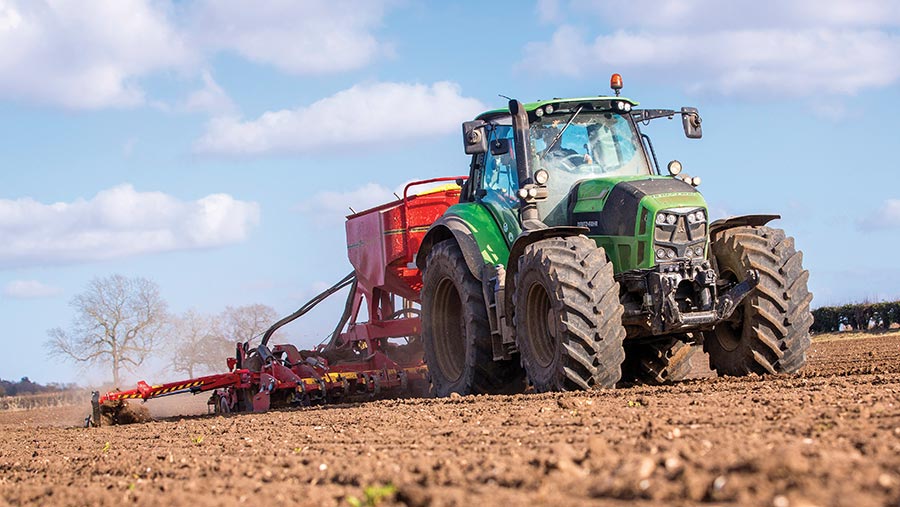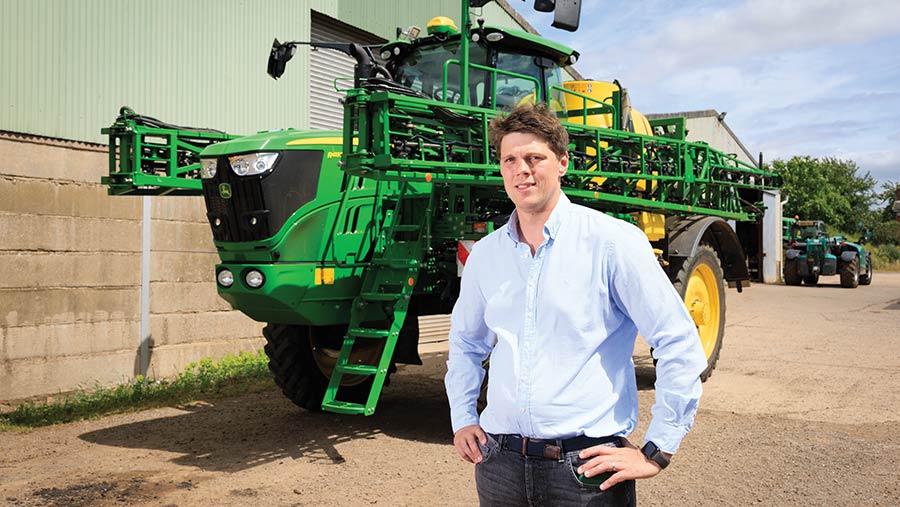What are the key traits of top-performing arable farms?
 © GNP
© GNP High input costs, volatile markets, challenging weather and reduced direct support payments are all affecting the bottom line for farmers, making it imperative that businesses focus on improving performance and making savings wherever possible.
That’s the advice of farm business consultant Andersons, with its latest report on relative farm performance showing that farm business incomes for the top 25% of cereal farms in England are typically £100,000/year higher than for the bottom 50%.
Direct support payments for most farm businesses will reduce by 50% by the end of this year, ahead of their complete removal by 2028, emphasising the increasing need to maximise returns elsewhere and putting a heightened focus on new support schemes such as the Sustainable Farming Incentive (SFI).
See also: Tips to attract and retain staff in a tough market
The Characteristics of Top Performing Farms report, produced by Graham Redman and Harry Davies of the Andersons Centre on behalf of the AHDB, found more than 50 management practices that businesses can implement on-farm to improve performance.
Sarah Baker, head of economic analysis at the AHDB, says the report highlights the factors that have the most significant influence on farm business performance and the stark difference in income between the top and bottom performers after accounting for farm size, sector and geographical features.
“While there are nuances for each sector, the key point to note is that the factors identified are within farmers’ control to address and potentially improve their farm business performance,” she advises.
“Our aim is to provide farmers with tools and services to help identify where they may be able to make some changes to their businesses, with a view to improving performance and having a positive effect on their bottom line.”
The analysis relates to farm businesses in England, but much of the advice is transferable across farms throughout the UK.
Graham Redman, partner at the Andersons Centre, tells Farmers Weekly that, in order to improve performance, businesses should focus on overhead costs, spending money on the variables that increase outputs, setting goals and budgets, focusing on detail and developing a mindset for change.
“The biggest change on the majority of farms is getting the overhead structure right,” he says, adding that businesses should make sure they’ve got the right size machinery with the correct width equipment, while also considering field size, farm size and expected use so everything can align with each other.
Comparing performance between farms
The Andersons/AHDB report observes eight key trends that differ between the highest and lowest performers:
- Despite spending more on fertilisers, seeds and crop protection, the total costs per hectare and per unit of output are lower on top performing farms
- Top performers generally achieve higher yields and a higher wheat price
- Agricultural output is also frequently much higher amongst the top performing businesses
- Use of contracting is much more common amongst the top businesses
- Poorer performing farms are more likely to have significant debt
- Top performers are occasionally more specialised with some also specialising in other arable crops such as peas, beans, and potatoes
- Lower performing farms receive on average slightly more in agri-environment income per hectare as they are more likely to look for fixed income sources
- Top-performing farms are more likely to consider making major changes.
Common pitfalls
- Lack of attention to detail
- Too little focus on staff
- Poor succession planning
- Focus on appearance rather than productivity.
Marginal gains
The difference between top- and bottom-performing farms is made up of a large number of smaller improvements, and there is no one major thing top-performing farms do better.
Mr Redman says: “It’s a concept of just thinking about marginal improvements.
“If a farmer sat down and thought of a hundred different decisions they make in their business each year, and if they can make slightly better decisions or slightly better use of their resources, they will find themselves going into the next quartile of farming.”
Staff retention
One area where top-performing farm businesses often stand out is maintaining and recruiting staff.
Making employees feel valued and paying them fairly can have a significant effect on staff retention, with the best businesses regularly reviewing wages and working hours.
Mr Redman says offering that little bit extra to staff can make a difference.
“Look at everything, stop and think ‘am I really looking after my staff to the point at which they are going to look after me?
“Am I going a bit beyond what I am contractually obliged to do with my staff?'”
Mindset
“If you haven’t got a plan, then how do you know if you have succeeded or not?
“You have to be able to know when you can punch the air, but how would you know this if you don’t know what you are trying to achieve?” asks Mr Redman.
“Write it down, tell people in the business, explain this is what my budget is, where we are trying to get to, what our ambition is.
“But don’t just put a plan together and then stick it on a bookshelf, or you might as well not bother. Have it out on your desk.”
Mr Redman concludes by saying that mindset, determination and attitude to change are all crucial in achieving top performance.
“How strong is your drive to achieve whatever it is you want to do?”
Case study: Will Oliver, Leicestershire
Leicestershire arable and poultry farmer Will Oliver spoke to Farmers Weekly about how he runs his business to help drive gains in performance.
Mr Oliver says he is able to control on-farm costs through risk management, knowing the markets, being able to adapt, always being flexible and having a plan B.

Will Oliver © Tim Scrivener
“I do my own agronomy [Basis and Facts] and I shop around and try to get the best possible price, as it is quite a competitive market and there is quite a bit of movement out there,” he says.
Savings can also be made through nutrient management, better planning and knowing your crops, he adds, such as being aware whether they need a treatment or if there are any other savings to be had.
Staffing
The arable enterprise has two full-time employees who have been there long term, as well as some part-time labour.
“Having a good relationship with them is important to keep them happy, including awarding regular pay rises and not taking people for granted,” says Mr Oliver.
“The training and upheaval you would have to go through to replace them would be annoying.”
Budgeting and planning
Mr Oliver says he always does a cashflow report, so he knows how every type of enterprise is performing.
“We don’t want a single enterprise to be carrying another – they all have to be there on their own merit.
“We are always planning and looking at other markets for changing cropping. I’m also in the Sustainable Farming Incentive, which will be a big part of our business going forward.”
The business also benchmarks against similar farms to monitor performance.
“You need to be benchmarking against others to know how you are performing, otherwise you could just be treading water and standing still.”
For grain marketing, Mr Oliver says the business sells a little bit forward for risk management and follows the markets closely.
Key to performing well
Mr Oliver concludes: “Expertise in crop management is essential, as is adaptability, being efficient and productive, risk management, continuing to learn, attention to detail and having a grasp on your financials.
“Communicating with people in industry and in your team, and having the passion to succeed has to be important.”
